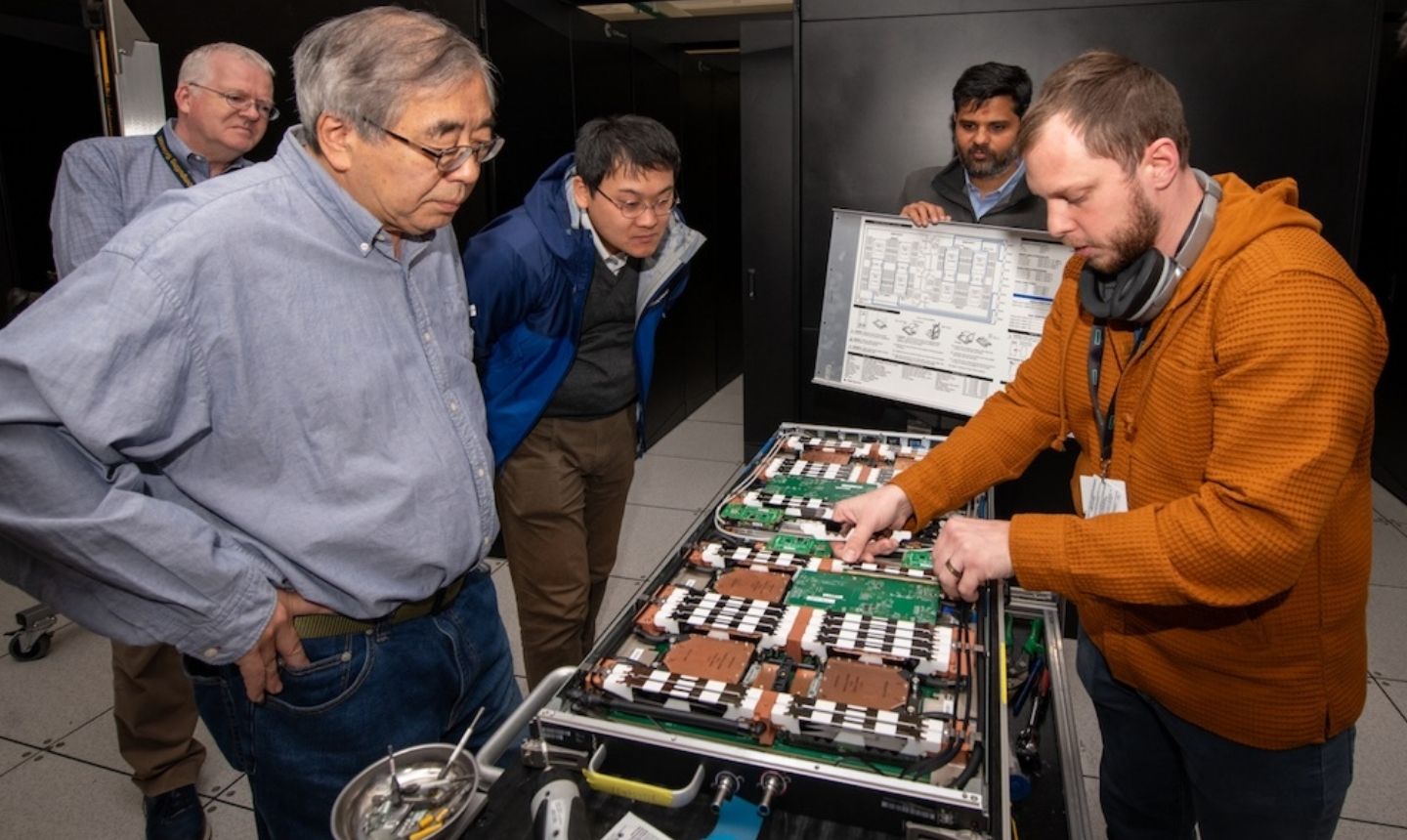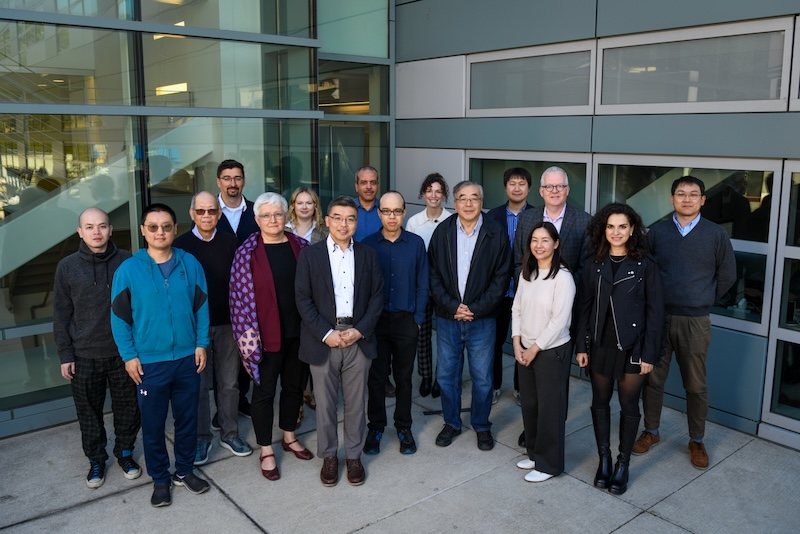These researchers work in the University of Tsukuba’s Center for Computational Sciences (CCS), which explores innovations in high-performance computing systems and networks and other areas of information technology.
Researchers at the CCS and the CSA have been collaborating since the CCS researchers first visited Berkeley Lab in 2011. Horst Simon, then the Deputy Director for Research at Berkeley Lab, suggested that the two institutions sign an MOU to explore research collaborations in computational mathematics, computer science, and computational sciences. The MOU was signed in 2013; the two institutions have worked closely since then.
Multiple worthwhile initiatives have resulted from this collaboration. After the collaborators discovered that the National Energy Research Scientific Computing Center (NERSC)’s Cori system and the Oakforest-PACS system at UT’s Advanced High-Performance Computing (JCAHPC) shared many of the same architectural features, the two groups exchanged information on best practices to help users develop and optimize their codes to run on the machines.
Additionally, Zarija Lukic, a staff scientist at LBNL’s Computational Cosmology Center, leads an ongoing collaboration with CCS centered on radiation transport, used to model the interaction of UV photons from the first stars and galaxies with hydrogen gas, reionizing the intergalactic medium. CCS staff have previously studied radiation transport in various applications, from astrophysics to medicine. They have helped Lukic’s team conduct simulations and analyses that have validated the accuracy of Nyx, a simulation code that helps researchers understand more about galaxy formation.
Another set of collaborators, UX Designer Sarah Poon at LBNL and Chun Xie at CCS are investigating new strategies for user design. Using the concepts developed by the STRUDEL team, the collaborators and other LBNL team members successfully ran a workshop to create a user interface design for a multiview surgery recording system. Based on the positive reception of the interface, the team is interested in further design collaborations, including another prototyping workshop for AR/laparoscopic surgical recording equipment.

These collaborations are bolstered by annual, in-person workshops, which LBNL and UT jointly host. The topics for the visits change every year, which allows for the institutions to share their diverse research portfolio and facilitate new opportunities for sharing expertise. This year, CSA and CCS staff took turns presenting on such varied topics as high-performance computing and computer architecture, AI/ML applications in physics and scientific research, and environmental modeling. CCS also took a tour of NERSC’s facilities.
Esmond Ng, a Senior Scientist in the CSA, has collaborated with CCS since the beginning. Along with Taisuke Boku, the CCS Director, Ng has participated in every visit. Ng said he especially enjoyed the outbriefs from the breakout discussions following each presentation, emphasizing the camaraderie between both groups.
Sarah Poon, a Staff UX Designer in the CSA area, was the organizer of this year’s visit. She agreed with Ng, adding, “International collaboration takes a lot of energy and commitment, and I definitely saw a lot of enthusiasm from both institutions.” The CCS and CSA collaboration has already led to increased research developments. As even more advances are made in the field of computer architecture, both teams will be able to strengthen this connection and brainstorm new ideas for technological innovation.
About Computing Sciences at Berkeley Lab
High performance computing plays a critical role in scientific discovery. Researchers increasingly rely on advances in computer science, mathematics, computational science, data science, and large-scale computing and networking to increase our understanding of ourselves, our planet, and our universe. Berkeley Lab's Computing Sciences Area researches, develops, and deploys new foundations, tools, and technologies to meet these needs and to advance research across a broad range of scientific disciplines.


